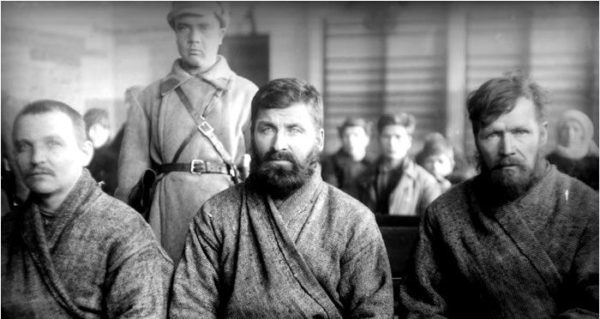 The infamous Moscow show trials ended 80 years ago this month. Based on fabricated charges of treason, Josef Stalin systematically eliminated virtually all of the remaining Old Bolsheviks, clearing away potential rivals and consolidating his power in the Soviet Union.
The infamous Moscow show trials ended 80 years ago this month. Based on fabricated charges of treason, Josef Stalin systematically eliminated virtually all of the remaining Old Bolsheviks, clearing away potential rivals and consolidating his power in the Soviet Union.
The first trial began in August 1936, the second in January 1937 and the third in March 1938. It was the public face of what’s been described as the mid-1930s Great Terror, or the Great Purge.
Estimates of the number of people killed vary considerably, but it likely ran into at least the hundreds of thousands. Historian Timothy Snyder puts the Great Terror’s body count at “probably a bit less” than a million.
Another historian, Walter Laqueur, stresses how the trials were “only the tip of the iceberg.” While the “Moscow court proceedings concerned no more than about 50 people,” the purge extended far beyond the political cadres. Both the Red Army officer corps and the leadership of the NKVD (secret police) were ruthlessly decimated.
Laqueur also makes the point that “Stalinist terror differed in essential aspects from the terrorist practice of fascism.”
The distinction wasn’t a matter of morality, but rather that Stalin distrusted his own colleagues and population in a way that neither Adolf Hitler nor Benito Mussolini did. Hence the paranoia and unpredictability. You could be an insider one day and arrested the next.
Genrikh Yagoda was an example. In his capacity as head of the NKVD, Yagoda had been a key player in running the 1936 trial. By 1938, he was a defendant. Found guilty, he was shot on March 15, 1938.
Historians sometimes struggle to explain a feature of the Moscow trials. Men confessed to non-existent crimes and wives accused husbands of things they hadn’t done. It was as if the bottom fell out of the moral universe.
Of course, a good deal can be ascribed to matter-of-fact considerations like torture, threats against family and promises of leniency. From time to time, Stalin was personally involved in prescribing the need for more beatings. While people were often shot without trial, procuring public confessions had a terrifying demonstration effect. Nobody was safe.
The animating spirit was pungently expressed in chief prosecutor Andrey Vyshinsky’s summing-up at the March 1938 trial. Vyshinsky, who went on to be a significant Soviet player at the post-Second World War Nuremberg trials, didn’t mince words.
There was this: “The whole country, from the youngest to the oldest, are waiting for and demanding one thing: that the traitors and spies who sold out our motherland to the enemy be shot like vile dogs.”
And this: “We, our people, will as before stride along our path now cleansed of the last trace of the scum and vileness of the past, led by our beloved leader and teacher, the great Stalin.”
In addition to the physical duress, many of the accused must have been psychologically devastated. After spending decades as true believers and performing – or acquiescing to – various abominations for the Bolshevik cause, now they were being castigated as traitors. In their darkest hour, there wasn’t even the consolation of dying a martyr.
The passage of time has stripped the Moscow trials of any veneer of legitimacy. Begun under Nikita Khrushchev, the rehabilitation of the victims’ reputations was consummated in the late 1980s glasnost era.
Nikolai Bukharin, one of the prime 1938 targets, even became a bit of a cult figure. An intellectual with a particular bent for socialist economics, Bukharin’s writings were republished and the 1988 centenary of his birth was celebrated with conferences.
As for contemporary western reaction, George Orwell had this to say: “What was frightening about these trials was not the fact that they happened – for obviously such things are necessary in a totalitarian society – but the eagerness of western intellectuals to justify them.”
And some of them chomped at the bit.
In April 1938, 150 American writers, academics and actors signed a statement upholding the validity of the verdicts in the Bukharin trial. One of the signatories was the playwright Lillian Hellman, who later famously defied the House Un-American Activities Committee with the words “I cannot and will not cut my conscience to fit this year’s fashions. …”
Hellman lived long enough to see the truth of Stalinism revealed. But she never recanted her support for the Moscow trials. Maybe her conscience had a blind spot.
Troy Media columnist Pat Murphy casts a history buff’s eye at the goings-on in our world. Never cynical – well, perhaps just a little bit.
The views, opinions and positions expressed by columnists and contributors are the author’s alone. They do not inherently or expressly reflect the views, opinions and/or positions of our publication.


